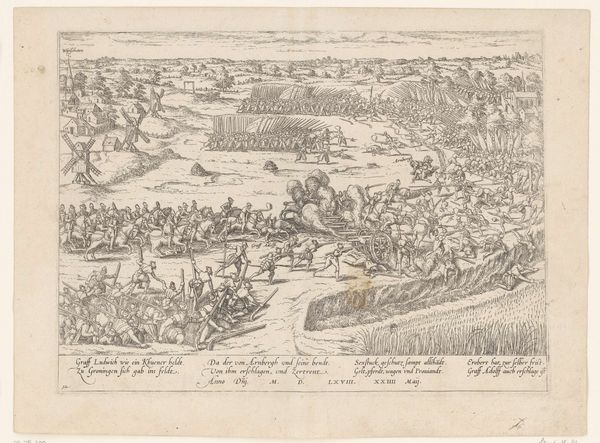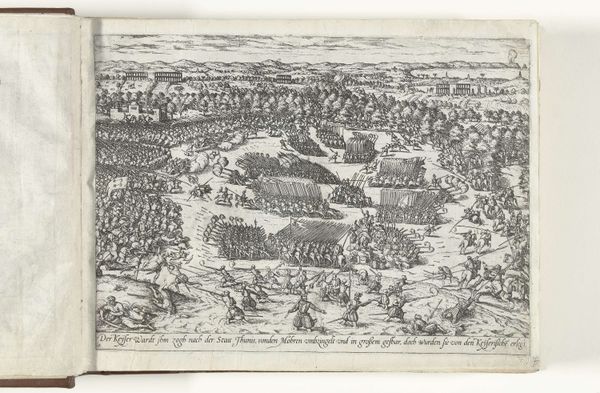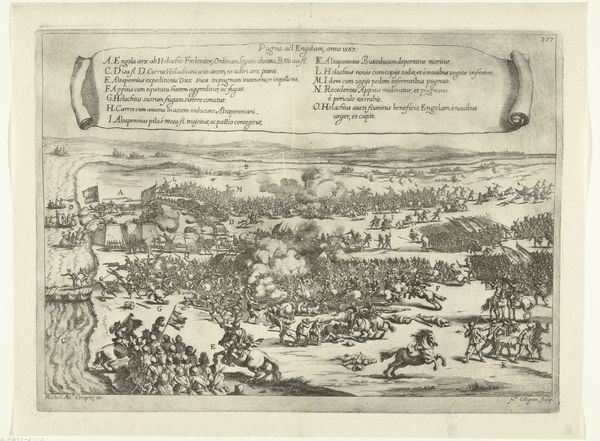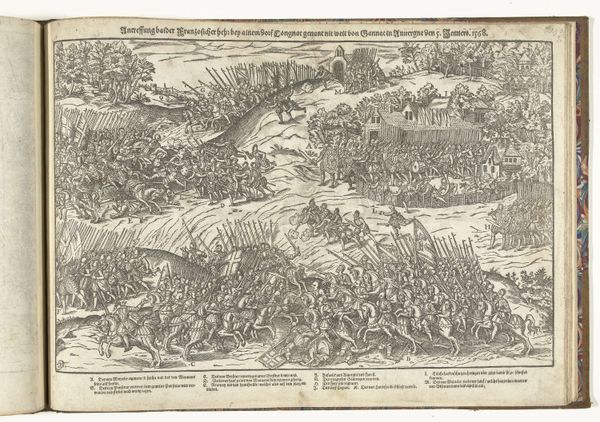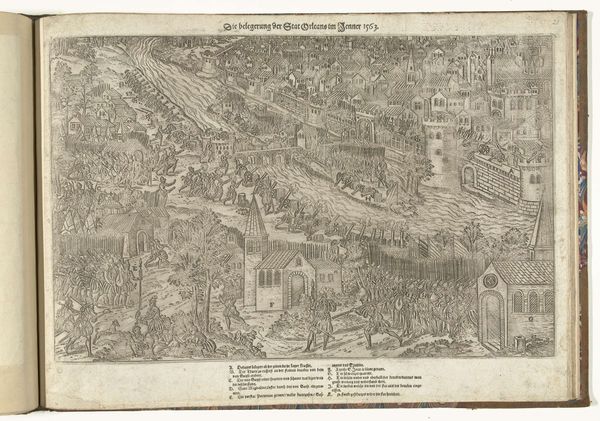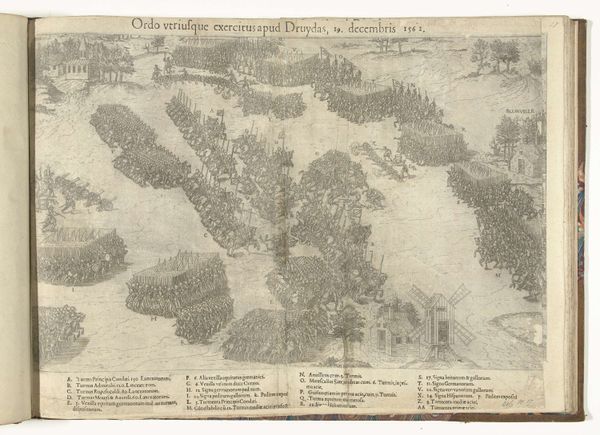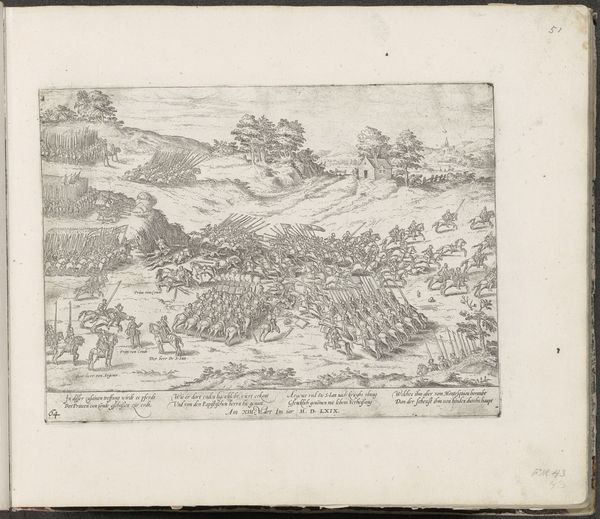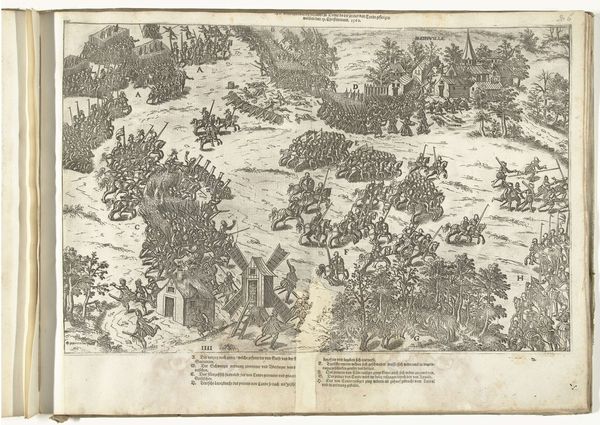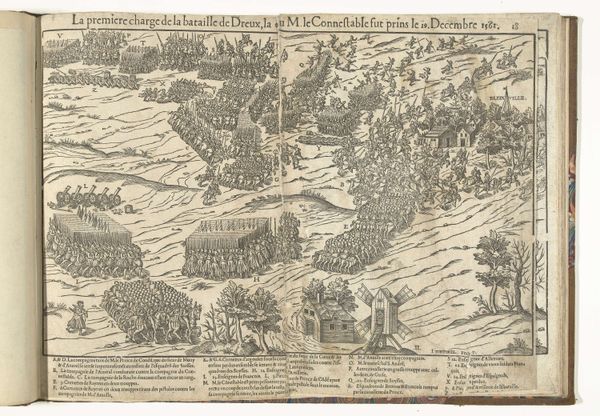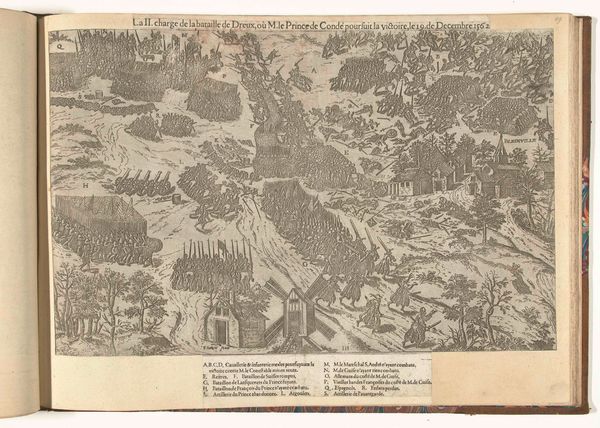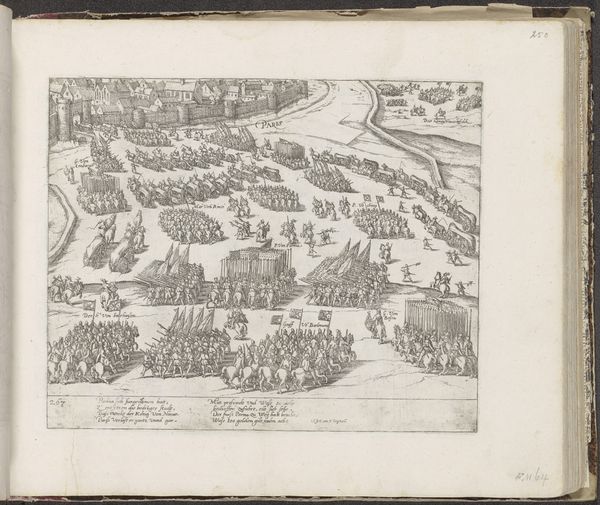
print, engraving
# print
#
landscape
#
mannerism
#
figuration
#
history-painting
#
engraving
Dimensions: height 356 mm, width 484 mm
Copyright: Rijks Museum: Open Domain
Editor: Here we have "Aftocht na de slag bij Dreux, 1562," or "Departure after the Battle of Dreux, 1562," created in 1570 by Jean Perrissin. It's an engraving and depicts quite a dramatic landscape filled with figures. I'm struck by how the linear perspective almost diminishes the individual stories happening within the scene. What draws your attention in this print? Curator: It's a fascinating piece, isn't it? The density of the image really speaks to the labor involved in producing prints like this. Think about the process – the meticulous work of carving into a metal plate. The way Perrissin depicts this battle as a product of societal structures and material resources available at the time is key. Editor: So, you're focusing on the production itself and the context in which it was made, rather than necessarily the subject matter depicted? Curator: Precisely. We see here the industrialization of warfare reflected in the industrialization of art production. The ability to reproduce these images and distribute them widely, that itself changed the way people understood warfare, transforming these brutal events into commodities for consumption. How does considering the "means of production" alter your understanding of this work? Editor: That’s interesting! It makes me think about who had access to this image back then, and what their relationship to the battle might have been. Were they removed from the actual violence, maybe members of the elite? And the details listed at the bottom are almost like inventory… Curator: Exactly! Think about the implications. What power does owning such a narrative give the consumer? Editor: I never thought about it that way before. I guess focusing on the materials and how the print was made opens up a whole other way to interpret the scene beyond just the battle itself. Curator: Indeed. And that's how we can see this seemingly distant historical print speaking volumes about the power structures embedded in image production and consumption, even today.
Comments
No comments
Be the first to comment and join the conversation on the ultimate creative platform.
